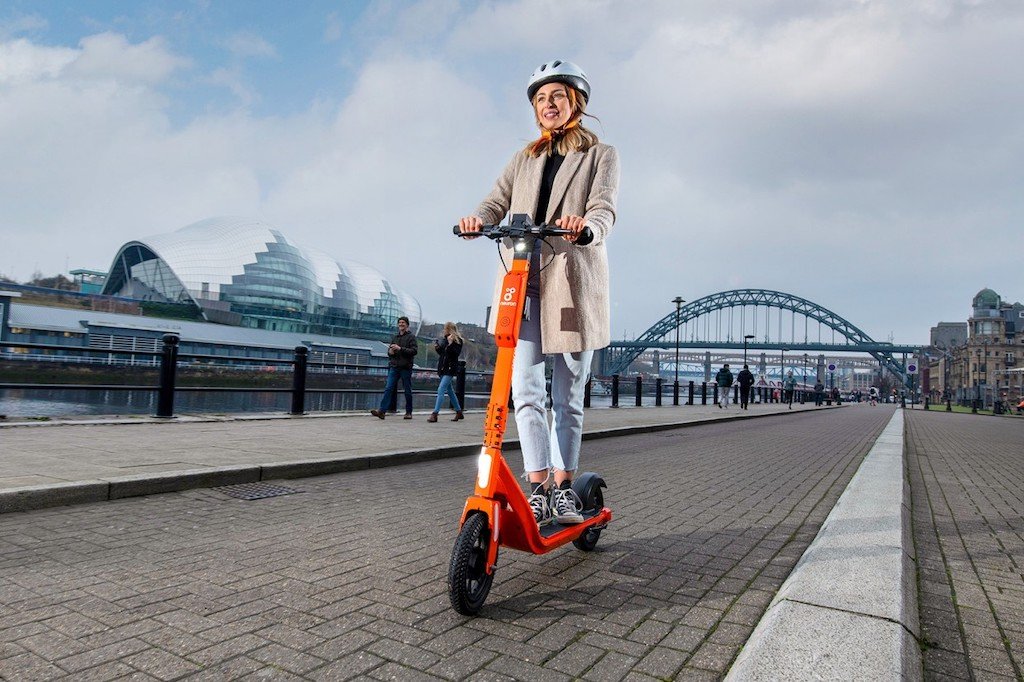RoSPA study finds e-scooters less risky than other forms of transport
A new study into the safety of e-scooters from The Royal Society for the Prevention of Accidents (RoSPA), the UK’s leading accident prevention charity, has found that e-scooters are significantly less risky than many other forms of transport.
The report recorded an incident rate of 0.66 collisions for every million miles travelled on an e-scooter – five times lower than bicycles with 3.33 collisions per million miles travelled and nine times lower than the figure of 5.88 for motorcycles.
The study, carried out with technical assistance from e-scooter operator Neuron Mobility, assessed the scale and nature of injury risk associated with e-scooters in comparison to other modes of transport. It covers data gathered by the Department for Transport (DfT) and provided by Neuron for the 2020 period.
RoSPA says that with the numbers of e-scooters in the UK increasing sharply since 2020, both as part of the Government’s ongoing trials and often illegal use of private e-scooters, there is a pressing requirement for further research into how the safety of these devices shapes up against other vehicles.
Almost all incidents analysed as part of the study were confirmed to have taken place on the roads (94 per cent), mostly on unsegregated single carriageways. The vast majority involved a collision between an e-scooter and a larger vehicle like a car, truck or lorry, highlighting the need for improved infrastructure and protection for riders. The data also shone light onto the types of riders involved and the time of day incidents were most likely to take place, with the majority of collisions happening during daylight hours, between 2pm and 7pm, with peaks at 3pm and 6pm. Men (77 per cent) were far more likely to be involved than women.
Based on these findings, the report makes a set of recommendations to improve the safety of e-scooters further, including:
Given the rate of crashes that take place on single carriageways, further investment in road design improvements, including segregated bike and e-scooter lanes, would be beneficial
Safety standards should be applied to improve the visibility of e-scooters on the road, including those that relate to indication, lighting and braking
Providing mandatory training on the Highway Code and the practical operation of e-scooters would be beneficial for all users
Awareness and training on e-scooter behaviour for other road users, in particular car drivers, would be beneficial
e-scooter users should be encouraged to wear helmets when riding
Nathan Davies, Executive Head of Policy and Portfolio at RoSPA said: “e-scooters are clearly set to be a long-term feature of our transport mix and it’s of pressing importance that we understand their impact on road safety and how they can be made safe for everyone to use.
"This report shows that e-scooters compare favourably to other kinds of vehicles and do not represent any greater safety risk to other road users and pedestrians. However, there is still a lot of work that needs to be done to ensure they are integrated on our highways and make sure both e-scooter riders and cyclists are offered greater protections from motor vehicles, which were the source of the vast majority of incidents.”
The data also shows that the overwhelming majority of incidents involving e-scooters (94 per cent) took place in local authority areas that were not operating an e-scooter trial, highlighting that so far, the UK’s shared e-scooter trials have proven to be remarkably safe.
Shared e-scooter schemes tend to feature a range of safety innovations and stricter rules and regulations compared to privately owned e-scooters which are currently illegal for use on public land. For example, Neuron’s rental e-scooters, which have been approved by the DfT, are fitted with GPS and geofencing which controls where they can be ridden and parked and their speed in different areas.
This type of technology allows operators to set riding area boundaries, slow-zones, no-parking zones, and no-ride zones. Every trip is logged and all e-scooters have insurance, integrated safety helmets, identification plates, topple detection, and with daily safety checks and regular servicing, they are widely regarded as a safer option than private e-scooters.
Davies added, "Rental e-scooter operators taking part in the Department for Transport’s trial schemes have demonstrated a strong commitment to safety and rider education. However, we need to see these initiatives filter across to private sale models, where the majority of incidents occur, to ensure any wider rollout is done with safety as a priority.”
George Symes, UK Regional Manager at Neuron Mobility said, “As a relatively new mode of transport there is often a misperception that e-scooters present a greater risk than some other forms of transport, but the data shows this simply isn’t true. We welcome RoSPA’s report which shows that e-scooters – particularly rental e-scooters – compare very favourably to bikes and motorcycles when it comes to the number of incidents.
"We know that with the right investment in technology, education and infrastructure, e-scooters can be made even safer and more accessible.”

